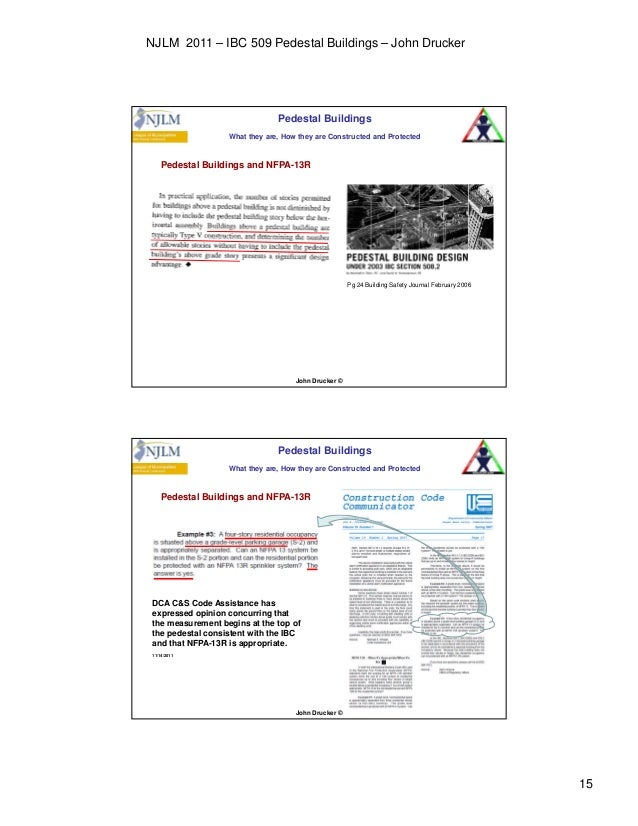The fire has become a significant problem in the United States. Every day, on the news, you see dark clouds of smoke and fire rising from residential occupancies, caused by kitchen accidents, faulty wiring, or carelessness. These increasing fires have now become nightmares for Americans, burning people's properties and turning precious lives into ashes.
NFPA 13R and 13D 2013 Edition Update Karl Wiegand, P.E. Residential Updates. Passive purge systems (13D Only). PEX (13D Only). Shadow areas. Sloped and beamed ceilings Passive Purge. A residential sprinkler system with a toilet. Only has one fixture so it is more likely to be installed by a sprinkler contractor. The following analysis of the NFPA 13D Standard illustrates the many technical installation, inspection, and maintenance concerns that will arise in the design and use of sprinkler systems in homes across the country. Referenced Standard: Review based on current language in NFPA 13D: Standard for the Installation of Sprinkler. NFPA 13R, Standard for the Installation of Sprinkler Sys-and conventional one- and two-family dwellings for the tems in Residential Occupancies up to and Including Four years 1999 to 2002. Hall indicated that although the fire Stories in Height, in 1989. NFPA 13R provides a sprinkler incident and fire injury rate is lower in manufactured. NFPA 13R 6.4.1 - There are a minimum of 3 spare sprinklers for each sprinkler type listed on the legend of the approved set of plans, 14. NFPA 13R 6.6.1.2 - The monitoring signals are received by the 24 hour monitoring location if required. NFPA 13R 6.6.8.1 - Water flow alarm is located according to the approved set of plans, is properly. National Fire Protection Association, an International Codes and Standards Organization, and copyrighted by the International Code Council, Inc. ('2016 NFP A 13R'), save and except the deletions and additions as set forth below. A copy of the 2016 NFPA 13R is incorporated herein by reference in its entirety.
Nfpa 13r Free Pdf
But what is the best solution to combat these horrible fires in residential buildings?
The answer is the Fire Sprinkler System.

What is a Fire Sprinkler system?

It is simple but effective machinery to stop the fire and protect against the most unexpected fires, minimizing the risk of property damage and life losses. The system is based on a water supply system that distributes highly pressurized water into the pipe network to which fire sprinklers are connected.

Sprinkler System acts as the first line of defense against the fire, and its proper installation is essential to constrain spark in the room where the fire begins. It is the most efficient component of the fire response system as it provides the residents sufficient time to escape the building on fire.
Nfpa 13r 2016 Pdf
According to the NFPA report on Sprinkler System, from 2010 to 2014, the death rate per 1000 fires was decreased by 87% in buildings with Sprinkler systems, compared to properties without automatic extinguishing systems.
Owing to Sprinkler systems, the civilian injury rate was reduced by 27%, and the firefighter injury rate was dropped by 67%.
Considering the importance and necessity of Fire Sprinkler systems, it is crucial to have appropriate guidance regarding their designs and installation.
NFPA 13R: Standard for Installation of Sprinkler Systems in Low-Rise Residential Occupancies
In this regard, NFPA 13R: Standard for Installation of Sprinkler Systems in Low-Rise Residential Occupancies cover up all the conditions requisite to design and install automated sprinkle systems in residential occupancies up to four stories high.
NFPA 13R includes all information about the designs and installation of the Sprinkle System to detect and combat fires in residential buildings. It ensures the proper utilization of Sprinkle systems to prevent life and property loss in a sudden fire.
A standard Sprinkler system that complies with NFPA 13-R
NFPA 13R provides assistance on Sprinkler system installation in buildings not exceeding 60 feet from the ground level. NFPA 13R clarifies that the standard is constructed to safeguard against a fire that starts from a single ignition location.
According to standard, a fast response sprinkler bearing a thermal element with an RTI of 50(meter seconds)1/2 or less is appropriate to combat fire to its origin in residential buildings.
In order to protect against fire, an integrated system of underground pipes is designed under fire protection standards. Each system includes a device to activate an alarm in response to heat and smoke from the fire origin and discharge water to control the fire.
NFPA 13R ensures that all sprinklers installed in residential occupancies are new and permanently marked with one or two character manufacturer symbols.
Along with these symbols, three or four numbers are present, giving each sprinkler a unique identity for identification of size, shape, rating, pressure, deflector characteristics, and thermal sensitivity.
Requirements of low rise residential building in accordance with NFPA 13R
NFPA 13R ensures that the building where the sprinkler system needs to be installed should be designed according to the standard. A compartment, to meet the requirements of NFPA 13R shall be a space entirely surrounded by walls and ceilings.
The compartment is allowed to have openings with adjacent space; however, the opening should have a lintel depth of 8 in the ceiling.
The requirements for the position and location of fire sprinklers should be based on these standards.
- To protect against fire, the Sprinkler system should be fitted throughout the building.
- Another vital point that must be considered while installing the sprinkler systems for maximum efficiency is their spacing. They should be present at proper locations without exceeding the maximum area per sprinkler.
- It is essential to precisely locate the positions of Sprinklers with respect to activation time and distribution to achieve satisfactory performance.
Nfpa 13r 2010 Pdf
That's pretty much it about it. If you want to know about NFPA 16, you can find it here.
